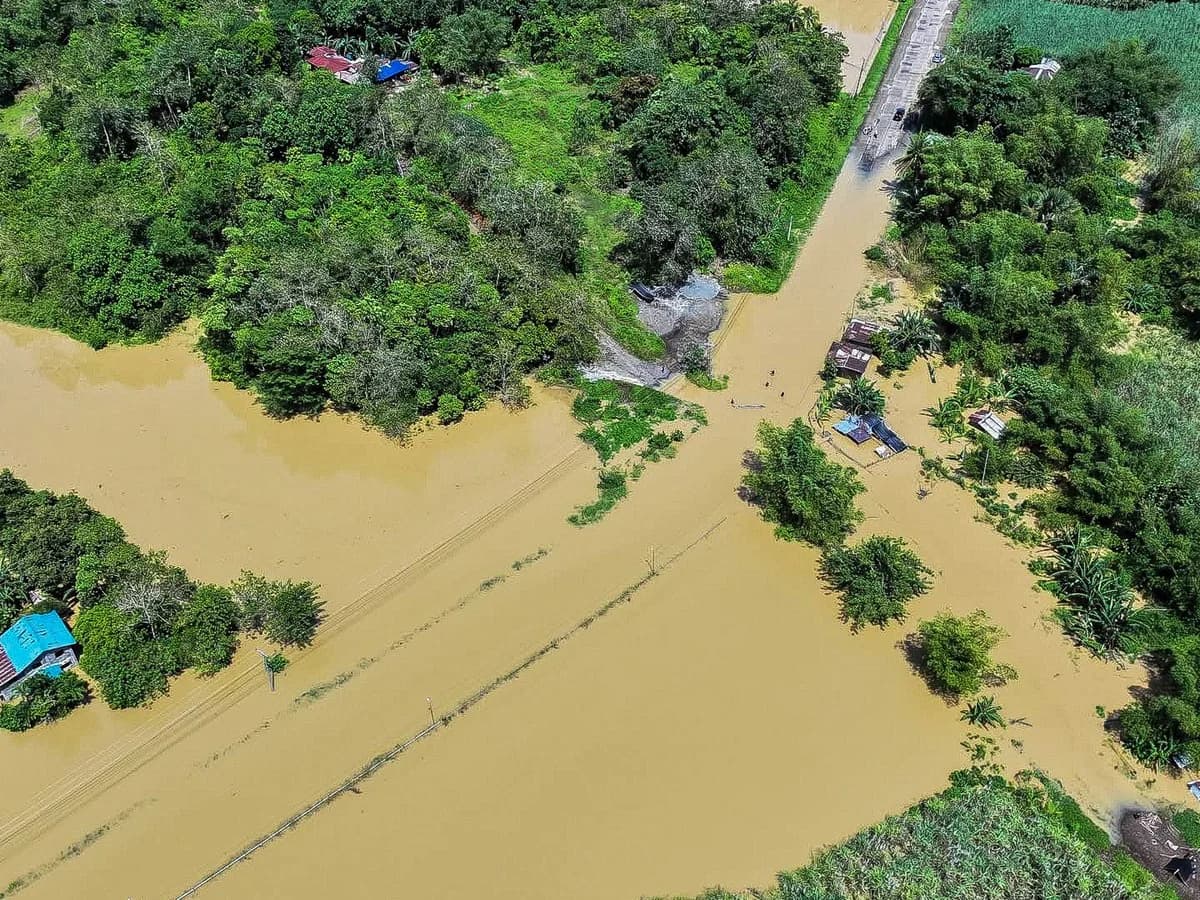Loading News Article...
We're loading the full news article for you. This includes the article content, images, author information, and related articles.
We're loading the full news article for you. This includes the article content, images, author information, and related articles.
Tropical Storm Fengshen, locally known as Ramil, has caused at least eight fatalities and displaced over 27,000 people in the Philippines, highlighting the nation's vulnerability to extreme weather events amidst ongoing seismic recovery efforts.

Tropical Storm Fengshen, known in the Philippines as Ramil, has claimed at least eight lives and necessitated the evacuation of over 27,000 residents after making landfall over the weekend. The storm, which struck near the municipality of Gubat on the southern tip of Luzon island, brought intense rainfall and a significant storm surge, leading to widespread damage across various regions.
The Philippine Atmospheric, Geophysical and Astronomical Services Administration (PAGASA) had issued a risk warning for moderate coastal flooding, with anticipated waves of up to 2 metres (6ft). Despite precautionary measures, five people died in Pitogo, Quezon province, when a tree fell on their house on Sunday morning. Three additional fatalities were reported in the Western Visayas region. Search and rescue operations are ongoing for two individuals reported missing following a landslide in Quezon municipality, Bukidnon province.
The Philippines is highly susceptible to tropical storms, experiencing an average of 20 typhoons and storms annually. Fengshen marks the 18th tropical cyclone to affect the archipelago this year. The impact of Fengshen is compounded by recent seismic activity; the central and southern provinces are still recovering from a series of strong earthquakes that struck near the coasts of Cebu and Mindanao islands in recent weeks.
A powerful magnitude 6.9 earthquake on September 30, 2025, near Bogo City, Cebu, resulted in at least 75 deaths and extensive damage to thousands of houses and infrastructure. This was followed by magnitude 7.4 and 6.8 tremors off the eastern seaboard of Mindanao on October 10, 2025, which, despite their higher magnitude, caused eight reported deaths. These consecutive natural disasters have collectively impacted over 7 million people.
In response to Fengshen, Philippine authorities declared states of emergency in several affected regions, implementing measures such as suspending school activities and cancelling numerous flights. The National Disaster Risk Reduction and Management Council (NDRRMC) reported that 13,710 people were displaced, with 7,511 sheltering in 166 evacuation centres. The Department of Education (DepEd) reported that over 300 classrooms were damaged by the storm.
Local government units and Disaster Risk Reduction and Management Councils (DRRMCs) are coordinating to ensure preparedness for emergency responses. PAGASA continues to issue regular warnings and advisories, emphasizing the risk of flash floods and landslides in susceptible areas, particularly with La Niña conditions present in the Tropical Pacific, which are expected to bring above-normal rainfall from October 2025 to February 2026.
Fengshen is forecast to continue tracking over the Philippines, bringing heavy rainfall and flooding before moving into the South China Sea. The Joint Typhoon Warning Centre (JTWC) anticipates Fengshen will strengthen slightly to sustained winds of 70mph as it turns southwest towards Vietnam. Vietnam has already experienced significant impacts from Typhoons Kajiki and Bualoi in August and September 2025, respectively, with Kajiki causing at least 17 fatalities and Bualoi resulting in 36 deaths and extensive damage.
While initial reports indicate eight deaths, the Office of Civil Defense (OCD) is currently verifying and validating these figures to determine if all fatalities were directly storm-related. The full extent of damage to infrastructure and agriculture is still being assessed.
Authorities in both the Philippines and Vietnam will continue to monitor Fengshen's trajectory and intensity. The focus remains on search and rescue operations, providing aid to displaced communities, and assessing the full scope of damage. The ongoing La Niña conditions suggest a heightened risk of further tropical cyclone activity and heavy rainfall in the coming months, necessitating sustained preparedness and response efforts across the region.
Keep the conversation in one place—threads here stay linked to the story and in the forums.
Other hot threads
E-sports and Gaming Community in Kenya
Active 6 months ago
Popular Recreational Activities Across Counties
Active 6 months ago
The Role of Technology in Modern Agriculture (AgriTech)
Active 6 months ago
Investing in Youth Sports Development Programs
Active 6 months ago